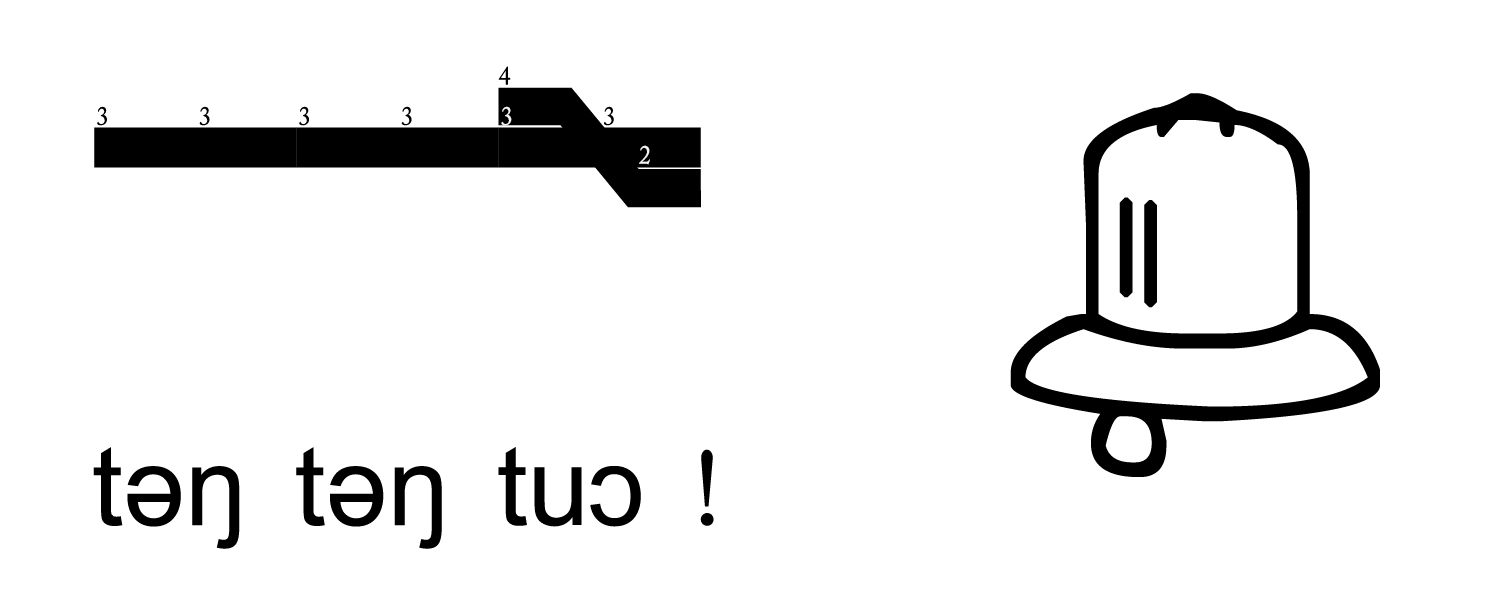Yujeu Dialect
1.0
/
Wenzhou Dialect (Yujeu Dialect) is a Chinese dialect spoken by local Han Chinese residents of Wenzhou City, Zhejiang Province, China, and has been called the most difficult to understand dialect in China with Wenbai heterophony. In Yujeu dialect, there is a rich variety of reading and oral pronunciations with complex changes, which makes the dialect words richer. However, the pronunciation of most words is relatively fixed and cannot be changed arbitrarily. The use of different pronunciations makes the meaning different. I chose three rhymes from my childhood memories to interpret and visualize the unique "change of tone" and "different interpretations" of the Wenzhou dialect in my unique way of expression.

Artist Book, 2023
2.36’’x2.05’’
Yujeu Heterophony
Wenzhou Dialect (Yujeu Dialect), a Wu dialect, also known as Ou, is a Chinese dialect spoken by local Han Chinese residents of Wenzhou City, Zhejiang Province, China, and has been called the most difficult to understand dialect in China.
Wenbai(Reading and oral) heterophony is a relatively common phonological phenomenon in Chinese dialects and even in the cultural circle of Chinese characters. The reason for this is that, at different times, local dialects have absorbed the pronunciation of some words from strong outside dialects and coexisted with the original pronunciation of the word in that dialect. The new pronunciation is "reading pronunciation"; the original pronunciation is the oral pronunciation.
In Yujeu dialect, there is a rich variety of reading and oral pronunciations with complex changes, which makes the dialect words richer. However, the pronunciation of most words is relatively fixed and cannot be changed arbitrarily. The use of different pronunciations makes the meaning different.
Yujeu nursery rhyme
The fastest way to learn this dialect in my childhood life was to learn to listen and understand. In addition to the traditional Wenzhou culture of singing drum words on TV, the older generation would sing Wenzhou nursery rhymes to the children every day. For example, Eat Wonton and Ding Ding Dang are the most familiar rhymes to Wenzhou children in their childhood, so I chose three rhymes from my childhood memories to interpret and visualize the unique "change of tone" and "different interpretations" of the Wenzhou dialect in my unique way of expression.
![]()
cii vaŋ daŋ, Eating wontons is a nursery rhyme that adults will sing
in order to coax their children into eating wontons which is a catchy
jingle about eating different parts of the wonton in different ways.
![]()
taŋ taŋ tuɔ, Dingdingdang is a short, well-scored nursery rhyme
involving many of Wenzhou's famous sights.
![]()
maimai is a nursery rhyme like a poem, with well-organized words,
as well as the appearance of many life-like objects, but it has not
spread as much as the first two.
Design Concept
![]()
The pronunciation and language structure of Wenzhou dialect (Ou) is relatively old, and it is not compatible with Mandarin or other Wu languages, so it is difficult to be read and understood by people outside of the Wenzhou area. The pronunciation of the stress position is not air-filled and clear, but audibly has a sense of turbidity, which is very different from the northern Wu languages and often puzzles people.
According to Wenzhou Dialect Journal and Shen Kecheng's Wenzhou dialect, Wenzhou dialect has 35 consonants (including zero consonants and nny nng), 30 rhymes (not including n and m rhymes), 8 tones, and 13 variant modes of the two-word group, but unfortunately, Wenzhou dialect has been soothed by the incoming consonants.


Artist book format
I chose one-page fold accordion book as the format of nursery rhymes which can be folded as tiny pocket book but also can be read as a whole page layout.


2.0
/
At this stage, I brought this project back to create new assets to it. In order to apply Wenzhouese with English, I design a new system of the alphabet and an installation for bilingual education and experience.


Phonial installation, 2025
Cards: 3’’x6.25’’

Optotype, 2025
15’’x30’’
Poster Design





